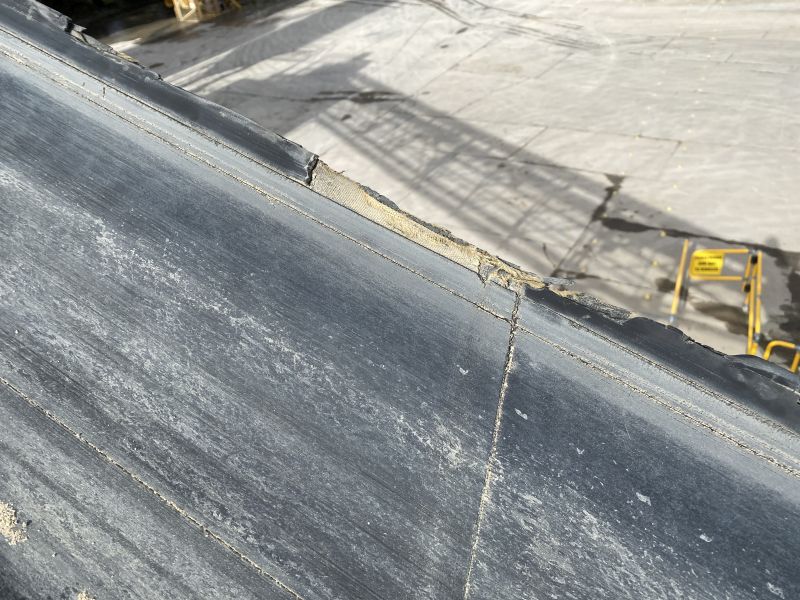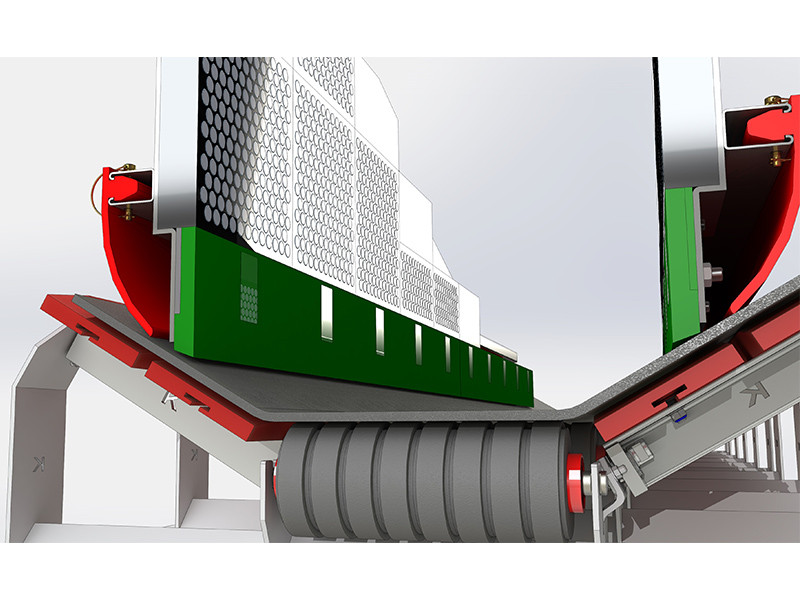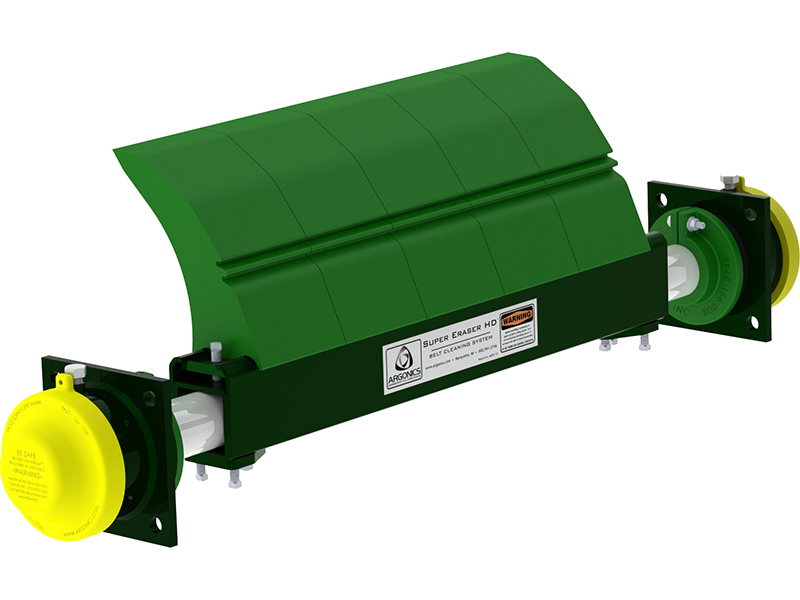The most common cause of a broken conveyor belt is the impact of sharp, heavy materials at conveyor transfer points. Other contributing factors include misaligned or clogged rollers, improper skirting material or adjustment, excessive belt sag between idlers, and material build-up in or under the chute. These issues can lead to premature wear, belt tears, and costly downtime.
At Kinder, we offer a range of engineered belt damage solutions designed to extend conveyor belt life, reduce maintenance costs, and improve bulk material handling efficiency.
Kinder Engineered Solutions for Belt Damage
Impact Load Zone Belt Support
Heavy impact from bulk materials can cause severe belt and idler damage. Our Impact Load Zone Belt Support absorbs shock at transfer points, reducing stress on the conveyor system and preventing punctures, tears, and excessive wear.
Conveyor Skirting & Sealing
Poorly sealed transfer points lead to material spillage and belt damage. Our Conveyor Skirting & Sealing solutions help maintain effective containment, reducing belt edge wear and minimising dust emissions.
Belt Cleaning System Products
Carryback contributes to material build-up, increasing the risk of belt misalignment and damage. Our Belt Cleaning System Products remove residual materials efficiently, ensuring a clean and well-maintained belt.
Conveyor Belt Tracking
Misaligned belts lead to uneven wear and potential belt damage. Our Conveyor Belt Tracking solutions ensure the belt runs centrally, reducing edge wear and preventing belt drift-related failures.
Early Detection and Prevention of Belt Damage
Since the conveyor belt is the most critical and expensive component in bulk materials handling, identifying small issues before they escalate is essential. Installing a belt rip detector immediately after the loading zone provides an early warning system, allowing for timely intervention to prevent further damage.
How to Prevent Belt Damage
Install Belt Support
Impact from transported materials can damage idlers, the conveyor structure, and the belt itself. Belt support beds at transfer points help absorb impact forces, preventing sharp materials from puncturing or tearing the belt.
Select Effective Sealing
Achieving proper conveyor skirting & sealing requires a combination of belt support and conveyor skirting solutions. A flat, sag-free belt line in the skirted area is essential to effective sealing and to prevent entrapment damage.
Ensure Belt Alignment
For a conveyor belt to track correctly, idlers and pulleys must be aligned, level, and squared to the centre line. If misalignment persists, belt tracking systems should be installed to maintain stability.
Install Belt Cleaning Systems
Selecting the right belt cleaning system extends belt life by preventing excessive wear and material carryback. Poorly installed or maintained cleaners can damage the belt, making regular inspections and adjustments essential.
Common Belt Damage Issues
- Belt Edge Sag – Uneven support at belt edges can cause sagging, leading to misalignment and material spillage.
- Belt Misalignment – A belt that does not run centrally results in uneven wear and potential tracking failures.
- Conveyor Environmental Infrastructure – Poor environmental conditions, such as dust accumulation, can accelerate belt degradation.
- Conveyor Safety – Inadequate safety measures can increase the risk of belt-related hazards.
- Conveyor Dust Suppression System for Risk Prevention – Uncontrolled dust emissions cause premature belt wear and environmental concerns.
- Material Carryback – Residual material on the belt can lead to build-up and tracking issues.
- Material Spillage – Unsealed transfer points allow material loss, causing additional wear on the belt.
- Premature Roller Failure – Poorly maintained rollers contribute to uneven belt wear and potential system breakdowns.




